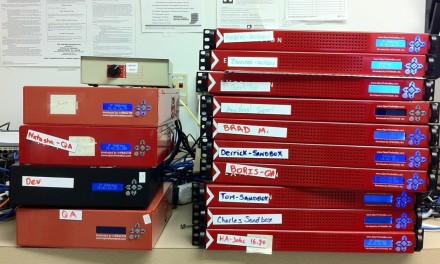Anyone who's developed and sold or purchased products over the years comes to learn about certain categories of features. These different categories of features are important to buyers and sellers, impacting purchase decisions, product use, customer satisfaction, and product lifecycles. I'm going to run down the list as I know them. Let me know if I leave out any categories.
- Luminary Features. Every market has product features that buyers feel must be available for purchase but never (or rarely) want to, you know, actually buy them. As a vendor, if you don't have the feature, you're out of consideration. A good example is the HL7 interface for networked medical devices - everyone wants to know if you've got one, but no one wants to actually give you money for it. Beating your competition with these "lock out" features works if a) you've got the feature to sell, and b) have the critical mass in your sales and marketing to create a sense of need. Many times these are features developed for luminary accounts (the most advanced users with the most toys) and are then promoted to the "mere mortal" market segment.
- Furby Features. Then there's the feature that products must have because buyers want to buy them (although this type of feature is usually bundled or low cost). The defining characteristic of this category is the fact that buyers will try it out a time or two and then never use it, realizing that in the real world beyond managed demos, PowerPoints and brochures, the feature delivers little real value. My favorite example is "bed to bed communications" in patient monitoring systems (I could go on at length about the practical use and safety of this feature, but I won't). Another favorite is "portal technology" where you can open a window on your patient monitor (don't worry if the patient goes into ventricular tachycardia, the monitor will alarm) and look at that lab report that's also in the chart, or (my favorite) a crappy image of an x-ray. Features in this category frequently make sexy demos.
- Meat and Potatoes Features. The unsung feature category is one that vendors are actually paid for and users use day in, day out. I say "unsung" because it seems these meat and potatoes features never carry the emotional freight of the preceding categories. Sure they get tallied and ranked, but they're the features that most every vendor under consideration has. The marketing guys (of which I was once one) don't put a lot of emphasis on the features they share with competitors but rather create "sizzle" and "buzz" around "differentiators." All this is too bad because the qualitative differences between widely available features makes or breaks the success of a product in the eyes of their users.
- Missing Features. Finally we come to the mystery feature category. These stealth features are the ones that buyers had no ideal they needed or wanted until they bought the product and tried to use it. These types of features become the crusade of the installed base, and the step child of the product manager. Investing the money to bring these features to market will make customers happy (which is good), but probably won't increase sales (very very bad). Whether your vendor is cynical and manipulative or truly good hearted, it seems customers wait a long time for these features - maybe forever.
As a buyer you want to avoid Luminary Features unless you're really going to need them within the life of the product. At the same time, resist vendors who promise to release that Luminary Feature in the next release because they rarely do. Prior planning of a scope that goes beyond this immediate purchase is critical to avoid the Luminary Feature pothole. Meaningful discussion with the users of candidate products will help avoid the Furby Features and identify the Missing Features. A solid needs assessment and experience in the product category is important to good product and vendor choices.
UPDATE: After reading over this post (something I obviously don't usually do) I'm reminded of secondary alarm notification. As I've explained before, you can't provide patient care based on the capabilities provided by secondary alarm notification - yet vendors continue to bring this feature to market, and hospitals continue to buy. Perhaps we have discovered a new category of feature; but what to call it?



Recent Comments